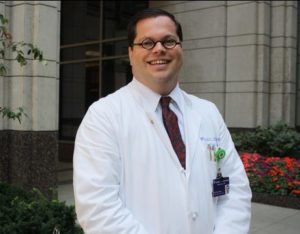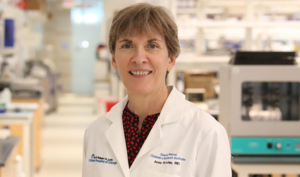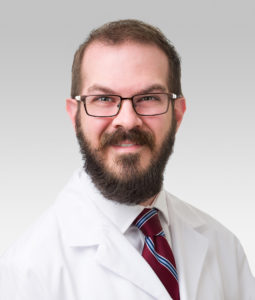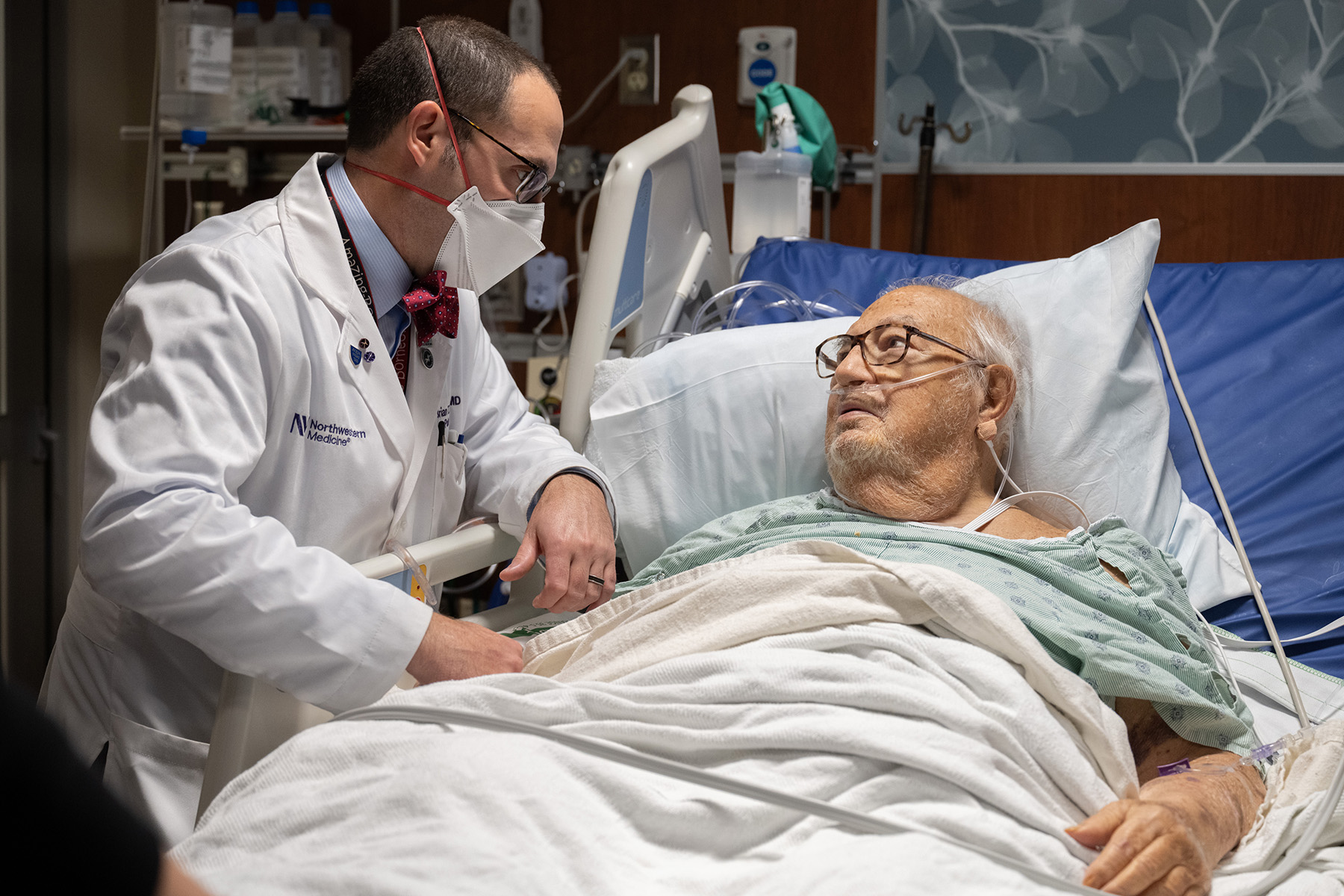In early August, the United States passed five million cases of COVID-19 and is responsible for almost 25 percent of world’s total number of cases. Worldwide, there have been more than 700,000 COVID-19-related deaths and the race to develop a safe and effective vaccine is in progress.
As the pandemic continues, Northwestern Medicine investigators continue to share their expertise about the current state of the pandemic, including a need for more transparency regarding the drug Remdesivir, implementing strategies to help mitigate the impact on incarcerated individuals and the U.S. correctional system, and what the future of the pandemic may look like with flu season right around the corner.
A Call for Transparency

On May 1, the drug Remdesivir, which was initially developed to treat Ebola and has also helped reduce the recovery time of patients with COVID-19, was granted Emergency Use Authorization (EUA) by the U.S. Food and Drug Administration. An EUA only lasts for one year, but can be renewed based on the circumstances of the emergency and continued clinical trials are required to allow for permanent approval. Despite this authorization, details about how the drug will become available are lacking and distribution of the drug to U.S. hospitals remains limited, according to a recent editorial published in JAMA.
“There are far more patients that may benefit from Remdesivir than there are doses to go around. Patients deserve to understand how the limited supply is being distributed by the U.S. and state governments,” said Michael Ison, MD, MS, professor of Medicine in the Division of Infectious Diseases, of Surgery in the Division of Organ Transplantation and author of the editorial.
On May 9, the U.S. Department of Health and Human Services issued additional information about the drug’s distribution plan to be made public. Yet even with this announcement confirming two distributions — one allocation of 35,360 doses to Indiana, Massachusetts, New Jersey, New York, Rhode Island, Tennessee, and Virginia, and a second allocation of 10,800 doses to Connecticut, Illinois, Iowa, Maryland, Michigan, and New Jersey — there still remains no information about exactly how these allocations were determined, according to Ison.
“Although the distribution of Remdesivir via the EUA is an issue unique to the U.S., as worldwide demand for the drug increases, the imbalance between drug availability and need will be further exacerbated,” Ison wrote. “Not all patients in the world who are eligible may have access to Remdesivir, but all patients deserve a fair and transparent allocation process that reflects the rapidly changing epidemiology of the emerging COVID-19 pandemic.”
Ison is also director of the Northwestern University Clinical and Translational Sciences (NUCATS) Institute’s Center for Clinical Research and a member of the Robert H. Lurie Comprehensive Cancer Center of Northwestern University.
Multisystem Inflammatory Syndrome in Children and SARS-CoV-2

Multisystem Inflammatory Syndrome in Children (MIS-C) is a disease that presents symptoms of prolonged fever, severe abdominal pain, low blood pressure, an increase in inflammatory markers in the blood, and myocardial dysfunction — and appears associated with recent infection with SARS-CoV-2, the virus that causes COVID-19.
Although SARS-CoV-2 has not been definitively proven as a cause of MIS-C, the fact that MIS-C has frequently appeared during outbreaks of COVID-19 in Europe and the U.S. is highly suggestive and the need for a narrower case definition is urgent, according to an editorial published in the journal Nature Reviews Immunology.
“Research studies should focus on patients with the originally described presentation of MIS-C symptoms and evidence of recent SARS-CoV-2 infection. This will avoid false conclusions that may arise if patients who actually have other illnesses are included in MIS-C research studies,” said Anne Rowley, MD, ’88 GME, professor of Pediatrics in the Division of Infectious Diseases, of Microbiology-Immunology and author of the editorial.
The pathogenesis of MIS-C still remains unknown and the Centers for Disease Control definition of MIS-C is broad, leading to diagnostic confusion, according to Rowley. In the editorial, Rowley discusses that non-SARS-CoV-2-related shock illnesses should not be included in MIS-C research studies to avoid confusion.
“I hope the medical community will recognize the limitations of the present case definition and avoid making the diagnosis of MIS-C in patients who have Kawasaki disease or other conditions,” Rowley said. “Practitioners should feel free to consult with experts in MIS-C, Kawasaki disease, acute COVID-19 infection, and rheumatologic conditions to assist them in making the correct diagnosis.”
COVID-19 and Flu Season

As flu season quickly approaches, the COVID-19 pandemic will present additional challenges to individuals and the U.S. healthcare system, according to a recent editorial published in the journal Science Advances authored by Benjamin Singer, ’07 MD, ’10 GME, assistant professor Medicine in the Division of Pulmonary and Critical Care and of Biochemistry and Molecular Genetics.
“The evolving COVID-19 pandemic has focused attention on viral pneumonia, and I wanted to broaden the conversation to include a cause of viral pneumonia with which we are more familiar – influenza – and how the two diseases could interact on a population- and patient-level going forward,” Singer said.
The seasonal influenza epidemic annually burdens the U.S. healthcare system, with tens of millions of cases reported during the 2019-2020 influenza season alone, and preparations for this year’s flu season will be further complicated by the COVID-19 pandemic, according to Singer.
In the editorial, Singer outlined the aspects of viral transmission, vaccination, co-infection, and healthcare disparities as factors determining the severity of the upcoming flu season. He also examined the epidemiology and biology of the SARS-CoV-2 virus and influenza to inform the development of preparation strategies.
“Even in non-pandemic years, the flu and other causes of pneumonia represent the eighth-leading cause of death in the United States, and respiratory viruses are the most commonly identified pathogens among hospitalized patients with community-acquired pneumonia,” Singer said.
Furthermore, he stressed that the upcoming season must include heightened attention to decreasing viral transmission, increasing influenza vaccination rates, maintaining awareness of the potential for co-infection, and applying efforts to mitigate racial disparities in the U.S. healthcare system.
Mitigating COVID-19’s Impact on Incarcerated Populations

While the COVID-19 pandemic has severely burdened the U.S., it especially continues to strain the nation’s correctional system and individuals who are incarcerated.
The communal use of items and facilities within a system already burdened by overcrowding and limited resources has made controlling COVID-19 transmission a challenge. Additionally, efforts to control COVID-19 infection may increase psychological burden for those who are incarcerated, according to an editorial published in the American Journal of Public Health.
“Ensuring the safety and well-being of inmates, while not only a moral and legal imperative, additionally has far reaching consequences as rioting has already broken out in several states around the country as a response to conditions. What happens within the nation’s jails and prisons ultimately affects the greater community as outbreaks spread into surrounding towns and cities through transfer to outside hospitals and from correctional staff,” said Lauren Kathryn Robinson, MD, MPH, assistant professor of Psychiatry and Behavioral Sciences, and first author of the editorial.
Reuben Heyman-Kantor, MD, a second-year resident in the Department of Psychiatry and Behavioral Sciences, was a co-author of the editorial, and Cara Angelotta, MD, assistant professor of Psychiatry and program director of the department’s forensic psychiatry fellowship program, was the senior author.
The authors outlined various strategies to help mitigate the impact of COVID-19 on incarcerated individuals and the U.S. correctional system at large, and noted that the pandemic is an opportunity to re-examine the safety and effectiveness of current practices such as harsh prison sentences and systemic overcrowding.
These strategies include releasing inmates who are at high risk for medical complications, those nearing the end of their term, and those who pose little risk to society, as well as and expanding teleconferencing services to be applied to psychiatric, counseling, and visitation services to bolster inmate morale and increase social distancing. Ensuring that correctional officers and staff are safe is also imperative to the functioning of jails and prisons, Robinson added.
“The incarcerated are an underserved population and some of the most vulnerable members of our society that merit our attention and compassion. They suffer from rates of mental illness that exceed that of the general public, leaving them particularly vulnerable to the social isolation inherent in quarantining. We also want to recognize correctional officers as front-line workers who share many of the same exposure risks as inmates and who are at increased risk of burnout,” Robinson said.
Utilizing Telemedicine and COVID-19 Information Overload

The COVID-19 pandemic has forced medicine to quickly adapt in almost every aspect, with every specialty having been impacted in terms of how they deliver patient care and identify potential solutions.
For pediatric otolaryngology specifically, telemedicine has been revolutionary in terms of improving patient care and saving valuable time and energy, according to an editorial published in the journal Otolaryngology – Head and Neck Surgery. Taher Valika, MD, assistant professor of Otolaryngology in the Division of Pediatric Otolaryngology, was the senior author of the editorial.
The transition to telemedicine was a dramatic shift and presented various challenges, according to authors, including helping providers and families transition to using telemedicine technology, working through technical difficulties, performing normal routine check-ins with limited physical examinations, and coordinating care for non-English speaking families.
The authors found that most families were satisfied with the educational aspect of telehealth visits. However, some families still found it difficult to accept recommendations in the absence of a complete physical examination and definitive diagnosis.
Overall, the authors found telemedicine for their specialty most ideal for appointments that required significant counseling, such as appointments with cochlear implant candidates or patients that required surgical counseling.
“As we have begun seeing patients in clinic, we have changed our entire framework and built telemedicine into the picture. What we once thought was never possible, is now a reality and we hope those in similar situations learn from our experiences and be able to care for their patients successfully during this time,” Valika said.
In a second editorial published in the same journal, Valika and colleagues describe the continuously changing, and oftentimes conflicting landscape of information and policies regarding the COVID-19 pandemic and how this uncertainty has led to extensive stress for medical providers.
“In a time of widespread immediate access, conflicting advice and data lead to an overly informed public, which translates to a worried and uninformed public,” Valika said.
In response, Valika and colleagues identified academic publications regarding COVID-19 and compared them with publications about prior pandemics. According to the authors, SARS and MERS generated 3.6 percent and 0.75 percent as many publications within the first four months of their respective pandemics. Since the emergence of SARS over 17 years ago, the authors found that the total number of peer-reviewed publications regarding SARS has not surpassed the number of COVID-19 articles produced within the first four months of the COVID-19 pandemic.
“We need to be mindful of the current literature and not emphasize quantity over quality,” Valika said. “Changes in practice guidelines should be based only on high-quality, well-powered research, which will come to fruition with time. We should strive as health care providers to limit the spread of misinformation. We may not have an answer, and that’s not necessarily a bad thing,”






